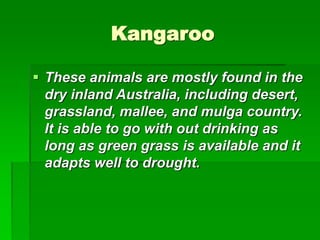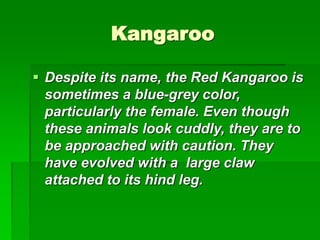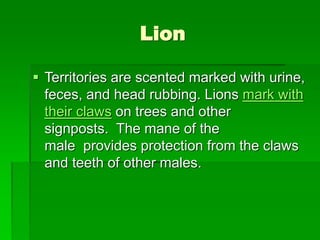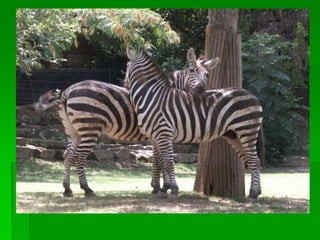The document discusses various animal adaptations for survival. It describes how elephants' trunks and large ears help them survive in Africa by performing tasks like drinking, cooling their bodies, and communication. Giraffes' long necks allow them to reach tall trees for food, while their camouflaged coats and tails help avoid predators. The document then summarizes adaptations of echidnas, geckos, kangaroos, sharks, wild dogs, lions, polar bears, skunks, and zebras that enable each species to thrive in their environments.
















































